SurfitBlade™
An offline application for use by engineers to generate blade surface forms for use in downstream processes such as computational fluid dynamics and finite element analysis.
SurfitBlade - fitting aerospace blade data
As a downstream add on application to APEXBlade, SurfitBlade takes the measurement probe tip-centre data, serialised as a result of running the APEXBlade generated DMIS program through MODUS, and surfaces it. In this way SurfitBlade provides true blade form analysis and radically improves the understanding of manufacturing capability.

SurfitBlade allows design engineers to accurately reverse-engineer manufactured blades, giving them revolutionary new feedback throughout the design and manufacturing process. Complementing APEXBlade, SurfitBlade creates a fully reconstructed surface from tip-centre sweep scan data, serialised as a result of running an APEXBlade generated DMIS program through MODUS. In this way SurfitBlade enables true blade form analysis and radically improves the understanding of manufacturing capability.
SurfitBlade guides you through each stage of the blade reconstruction process:
Sweep scan import
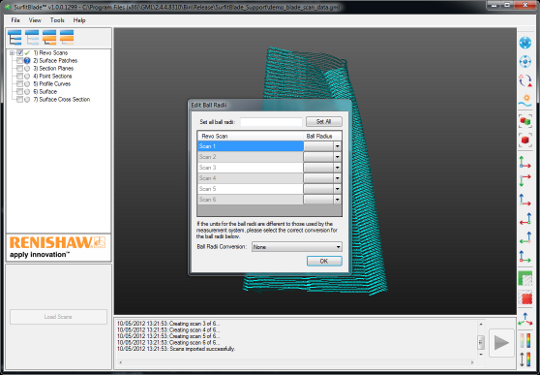 Import sweep scan data from MODUS.out or Geometric Modelling Library .GML files
Import sweep scan data from MODUS.out or Geometric Modelling Library .GML files- Set the sweep scan stylus ball radius
- Delete any unneeded scans
Surface patch generation
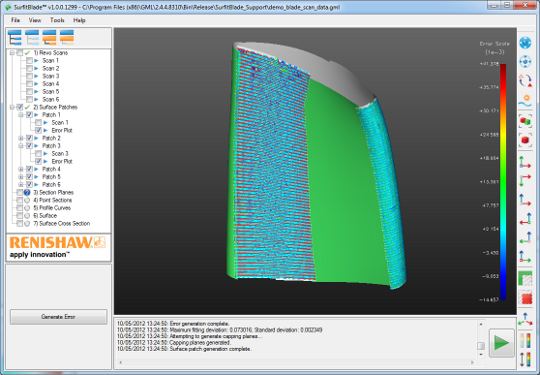 Generate a NURBS surface 'patch' for each of the sweep scans
Generate a NURBS surface 'patch' for each of the sweep scans- View error plots to gauge the quality of the patches
- Adjust the generation criteria to optimise the patches
Section plane generation
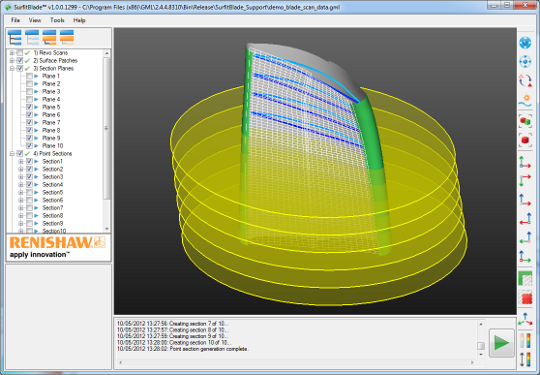 Define sectioning planes through the surface patches
Define sectioning planes through the surface patches- Adjust the planes by defining a top and bottom plane at each end of the blade
Generate offset sections
- Generate 'on-surface' point sections in each plane, by offsetting from tip-centre by the stylus ball radius
Generate section curves
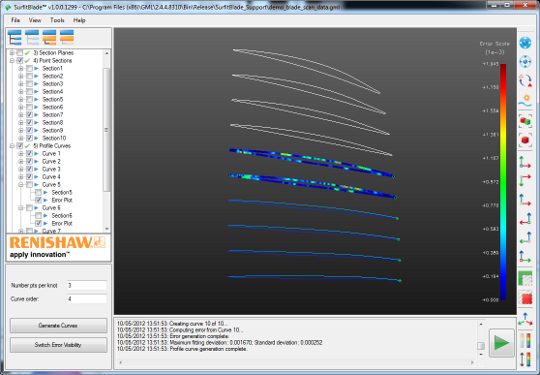 Interpolate NURBS curves through each point section, with dynamic control point density, to capture the true form of the profile
Interpolate NURBS curves through each point section, with dynamic control point density, to capture the true form of the profile- View error plots to gauge the quality of the interpolation
- Adjust the generation criteria to optimise the curves
Generate final surface
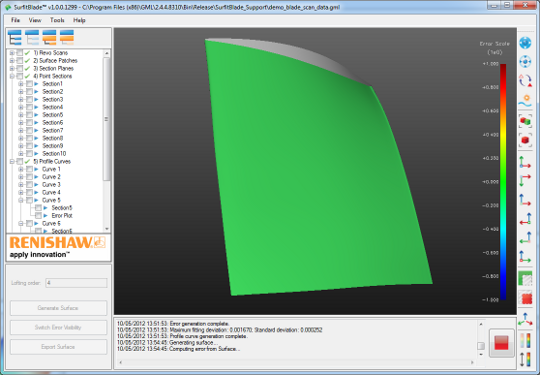 Loft through the section curves to generate a NURBS surface
Loft through the section curves to generate a NURBS surface- View error plots to gauge the quality of the final surface
- Adjust generation criteria or repeat the previous steps to improve the surface
Automatic reconstruction
Once blade generation is complete, the criteria used may be employed again for similar blades. SurfitBlade may be run 'lights-out', allowing automatic blade analysis to be performed on an entire blisk through SurfitBlade batch mode.

